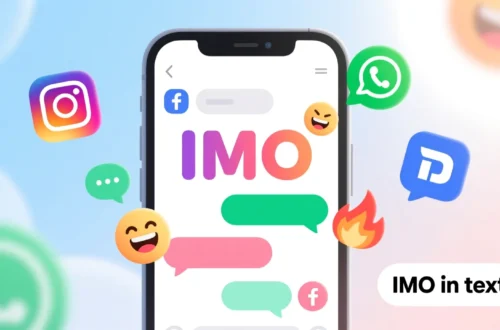Picture a traveler in a bustling Paris market, fumbling to ask, “Comment dit-on?” to learn a local phrase. That simple question, “how do you say,” opens doors to understanding across cultures. Whether it’s a curious “cómo se dice” in a Mexican cantina or a polite “dou iu no” in a Kyoto teahouse, this phrase reflects our universal desire to connect through language.
Let’s embark on a global journey to explore how people ask “how do you say” in different languages and what these expressions reveal about their cultures.
Reference Table: “How Do You Say” in Different Languages
| Language | Word/Phrase | Cultural/Linguistic Insight |
|---|---|---|
| French | Comment dit-on | Literally “how does one say,” used formally and casually. |
| Spanish | Cómo se dice | Means “how is it said,” common in conversational settings. |
| Italian | Come si dice | Translates to “how is it said,” reflecting curiosity. |
| German | Wie sagt man | Means “how does one say,” straightforward and direct. |
| Mandarin | Zěnme shuō (怎么说) | Literally “how to say,” emphasizing practicality. |
| Hindi | Kaise kehte hain | Translates to “how do they say,” used warmly in India. |
| Japanese | Dou iu no (どう言うの) | Means “how do you say it,” polite and context-driven. |
| Korean | Eotteoke malhae (어떻게 말해) | Means “how do you speak,” used in friendly exchanges. |
| Arabic | Kayfa taqūl (كيف تقول) | Means “how do you say,” used across 20+ countries. |
| Swahili | Unasemaje | Translates to “how do you say,” common in East Africa. |
| Zulu | Uthini | Means “what do you say,” direct and warm in South Africa. |
| Yoruba | Báwo ni o ṣe sọ | Means “how do you speak,” reflecting Nigeria’s expressive culture. |
| Maori | Me pehea te kī | Means “how to say,” tied to New Zealand’s oral traditions. |
| Hawaiian | Pehea ʻoe e ʻōlelo ai | Means “how do you speak,” rooted in aloha’s warmth. |
| Cherokee | Gado disesdi | Translates to “how is it said,” used in Native American communities. |
European Languages: Curiosity with a Cultural Lens
European languages express “how do you say” with clarity and curiosity. For instance, in French, “comment dit-on” (how does one say) is used in classrooms and casual chats, reflecting France’s love for linguistic precision. Meanwhile, Spanish speakers say “cómo se dice,” a phrase heard in lively Latin American markets, signaling an eagerness to learn. Additionally, Italian uses “come si dice,” which conveys a melodic curiosity, often paired with expressive gestures in Rome’s cafés. In German, “wie sagt man” is direct, aligning with Germany’s straightforward communication style. Thus, these phrases reflect Europe’s blend of intellectual curiosity and cultural warmth, from poetic Italian to pragmatic German.
Asian Languages: Harmony in Inquiry
Asia’s diverse languages offer unique ways to ask “how do you say,” often tied to politeness and practicality. For example, in Mandarin, “zěnme shuō” (how to say) is concise, reflecting China’s focus on efficiency in communication. In Hindi, “kaise kehte hain” (how do they say) carries a warm, inclusive tone, used in India’s vibrant streets. Similarly, Japanese uses “dou iu no” (how do you say it), a polite phrase that relies on context, common in Tokyo’s respectful exchanges. In Korean, “eotteoke malhae” (how do you speak) feels friendly, aligning with South Korea’s emphasis on connection. Finally, Arabic’s “kayfa taqūl,” used across over 20 countries like Egypt and Syria, carries a formal yet curious tone, rooted in the region’s literary heritage. These phrases highlight Asia’s range, from succinct Mandarin to expressive Hindi.
African Languages: Community in Questions
In African languages, “how do you say” often reflects communal learning. For instance, Swahili, spoken in over 20 countries like Kenya and Tanzania, uses “unasemaje,” a versatile phrase heard in bustling markets, signaling shared curiosity. In Zulu, “uthini” (what do you say) is direct yet warm, used in South Africa to invite dialogue. Similarly, Yoruba’s “báwo ni o ṣe sọ” (how do you speak) in Nigeria conveys expressiveness, often shared in lively gatherings. These terms emphasize community and openness, fostering connection across diverse African settings.
Indigenous & Island Languages: Bonds Through Inquiry
Indigenous and island languages ask “how do you say” with simplicity and connection. For example, Maori in New Zealand uses “me pehea te kī” (how to say), reflecting the culture’s oral storytelling traditions. In Hawaiian, “pehea ʻoe e ʻōlelo ai” (how do you speak) carries the spirit of aloha, used in warm exchanges. Similarly, Cherokee’s “gado disesdi” (how is it said) is concise, used in Native American communities to share knowledge. In Samoan, phrases like “e faʻapefea ona tautala” (how to speak) reflect the Pacific’s communal approach, often used in group settings. These terms emphasize unity and learning, tied to cultural traditions.
Cultural Insights: The Evolution of Inquiry
Phrases for “how do you say” have evolved with cultural exchanges. For instance, English’s “how do you say” draws from Old English roots of questioning, spread globally through colonization. In Arabic, “kayfa taqūl” traces back to classical texts, symbolizing intellectual curiosity. Moreover, in African languages like Swahili, “unasemaje” reflects trade-era exchanges, emphasizing shared learning. In Asia, terms like “zěnme shuō” align with philosophies of harmony and respect. These phrases carry histories of trade, migration, and education, uniting people in their quest to understand.
Proverbs and Sayings: Wisdom of Asking
- French: “Qui demande apprend.” (Who asks, learns.) – Highlights inquiry as a path to knowledge.
- Hindi: “Poochne se raasta milta hai.” (Asking finds the way.) – Emphasizes curiosity’s role in discovery.
- Swahili: “Unasemaje, ndoto huja.” (How do you say, dreams come.) – Ties questions to aspiration.
- Japanese: “Tazuneru kokoro wa michi o hiraku.” (A questioning heart opens paths.) – Links inquiry to growth.
- Yoruba: “Béèrè, kí o tó mọ.” (Ask before you know.) – Stresses asking as a step to wisdom.
FAQs
Why do some phrases for “how do you say” sound similar?
Shared linguistic roots (e.g., Romance languages like French and Spanish) and cultural exchanges (e.g., Arabic’s influence on Swahili) create similarities.
What’s the oldest term for “how do you say”?
Phrases like Latin’s “quomodo dicitur” (circa 1st century BCE) are among the earliest, influencing modern European terms.
How do cultures shape the phrase’s use?
Collectivist cultures (e.g., African, Indigenous) use the phrase to foster group learning, while individualistic cultures (e.g., European) focus on personal inquiry.
Conclusion
From “comment dit-on” in France to “unasemaje” in Tanzania, the phrase “how do you say” weaves a global thread of curiosity and connection. Each term, whether the polite “dou iu no” in Japanese or the warm “me pehea te kī” in Maori, reflects cultural values while celebrating our shared desire to learn. Consequently, these phrases remind us that asking questions bridges divides, uniting all people in a universal quest for understanding. How do you ask “how do you say” in your language, and what stories does it spark? Share your thoughts below—we’re eager to hear your voice!





